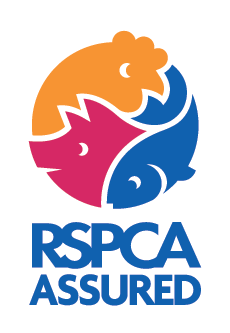Thakeham Dairy Farm, Sussex
Sometimes, as dairy farmer Joanna Binnington is managing the “energetic teenage heifers” on her Sussex farm, she pauses for a moment to reflect on just how her life has changed.
Previously, Joanna was working in London as a buyer for a high-end glassware retailer. Then in 1981, she married Tim and a few years later that was it, she upped sticks and made the move into farming.
“I’d always enjoyed working with animals and the chance to get involved with the family farm was too good an opportunity to miss. I have a special passion for cows. Within two years, Joanna had taken over running the farm.

At that time, we had a herd of 120 pedigree Holsteins, black and white dairy cows that are such an iconic part of our countryside. I love every part of working with them - walking through the herd and hearing them cudding quietly, the breeding and rearing of calves, letting the cows out to pasture in the spring and bringing them back inside before the start of winter.”
The herd has now expanded to 250 milking cows with 80 yearling heifers and 80 heifer calves. The farm is proud to be a supplier of milk for M&S and is working with RSPCA Assured to ensure the highest welfare standards for all the stock.
When Joanna first came into dairy farming, there were very few women working in the industry and she describes herself as having been “a bit of a novelty.”
“I had to learn absolutely everything from scratch. But there are advantages to coming from a non-farming background. You aren’t afraid to question everything and be open to new ideas and innovations.”
Nowadays, women are taking major roles in dairying both on farms and right through the supply chain which is wonderful to see.
But dairy farming is a volatile industry and notoriously difficult to thrive in.
“We grew the herd gradually and in 1999 we became part of the Marks & Spencer Milk Pool. Having that direct relationship with our retailer was a major change for us. Then in 2010, we arrived at a critical juncture: our old milking unit needed replacing. We either had to make a significant investment in the business or stop milking.
Luckily, we had a ten-year contract with M&S, so we were confident that we could make it work.”
With the security of the M&S Milk Pool contract behind her, Joanna was able to invest in a new unit to house the cows. A unit that would offer the very best in comfort and welfare for the herd and also the best working environment for the staff.
By 2012, the herd had grown to 250 and had moved into their brand new home.
Joanna operates a closed herd system. This means all their cows are born on the farm, raised on the farm and milked on the farm.
“We can trace back most of our Holstein dairy cow families over 40 years. One of our matriarch cows has eight generations of relations currently milking in the herd daughters, granddaughters, nieces and great-nieces. The latest calf from this family was born in November 2019 and is called Thakeham Archer Beauty 213.
We know the genetics of our herd very well so we can select the best animals to breed from for their productivity and health traits. The remainder of the cows are bred to an Aberdeen Angus and these calves leave the farm and go on to be reared for beef.
We became RSPCA Assured a couple of years ago. Their vision that all farm animals should have a good life and be treated with compassion and respect, chimes exactly with our approach.
There are more than 300 strict welfare standards we have to meet before our milk can be labelled RSPCA Assured. These standards cover the entire life of the animal and have both cow and calf health and comfort at their heart. For example, cows must have plenty of space and enough bedding so they can lie down and get up comfortably, they must be allowed outside to graze in the summer months and they must have environmental enrichments such as cow brushes so they can groom themselves. These and all the many other standards we are proud to meet.”
But What of “The Teenagers”?
“These are our heifers - around 12-18 months old. They are just starting to realise how big and strong they are and they can be very lively. We have 65 of them at the moment and moving them to new pasture can be challenging – although a bag of feed usually does the trick.”
